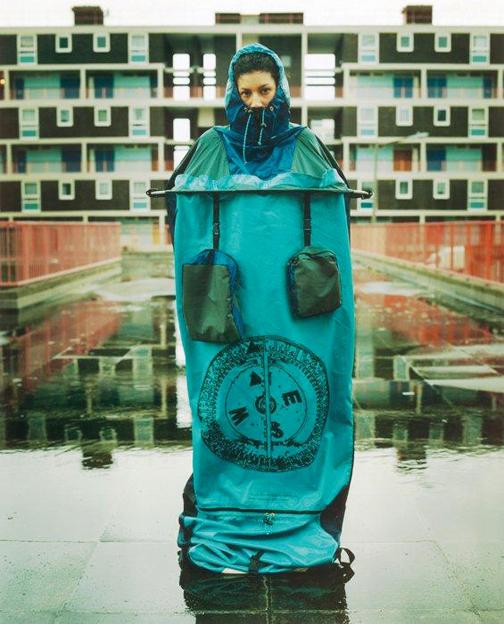From property deeds to shipping containers, from wearable shelters to virtual spaces, what does it mean to draw a spatial boundary? Or, to be at home? Jennifer Johung from the Univ. of Wisconsin discussed the topic of “Replacing Home” on Nov. 3. She defined this as leaving one’s house due to forces either out of one’s control or from within, then moving into a new home that has a social and natural structure.
Johung described several types of new spatial environments for people who may have either lost their home or moved out of it voluntarily. For example in 1999, Shigeru Ban created emergency response shelters for Rwandan refugees made out of power tubes. These homes, also used in Turkey and West India, had replaceable and recyclable foundations.
Another artist who made response shelters was Lucy Orta, whose portable homes were worn as garments. In essence, the wearer is surrounded by a cocoon that adheres to his movements, has a tough exterior, stands out, and is vibrant in color.
These cocoon garments were made in response to the Gulf War for protection against harsh conditions. The types of homes people create are limitless. In 2000, Do-Ho Suh also created homes that were easy to roll up, pack up, and carry.
Johung frequently emphasized the meaning of “replacing home.” “It is an engaged process,” she said, “and it happens when housing is denied.”
She discussed “relational architecture,” where one can go online, create a lighting design, hit a button, and then watch as search lights create that design in the night sky.
“A public square became many things to many people,” Johung said. She illustrated her point with photos of urban night skies lit up by search lights.
The concept of replacing home has also been explored by Clara Wilson in her “Odd Lots Project.” She and others have been doing their best to protect spatial sites. In 2003, Wilson proposed that black residential mailboxes be put up in odd lots with the word “nobody” painted on them. Fellow artist Jumbu Blakely further suggested that 10 parking meters be put up with art displayed on top of them.
Another project demonstrating the concept of replacing home was a cellular compartment, which was a multi-space habitat with lightweight panels that fold in and out for transportation.
In a world where notions of place are constantly changing, there is indeed a home in the midst of contemporary art, whether it be an artistic analogy of the prehistoric hut, a modular home, a wearable shelter or transformable garment, or a digitally networked site.





















































